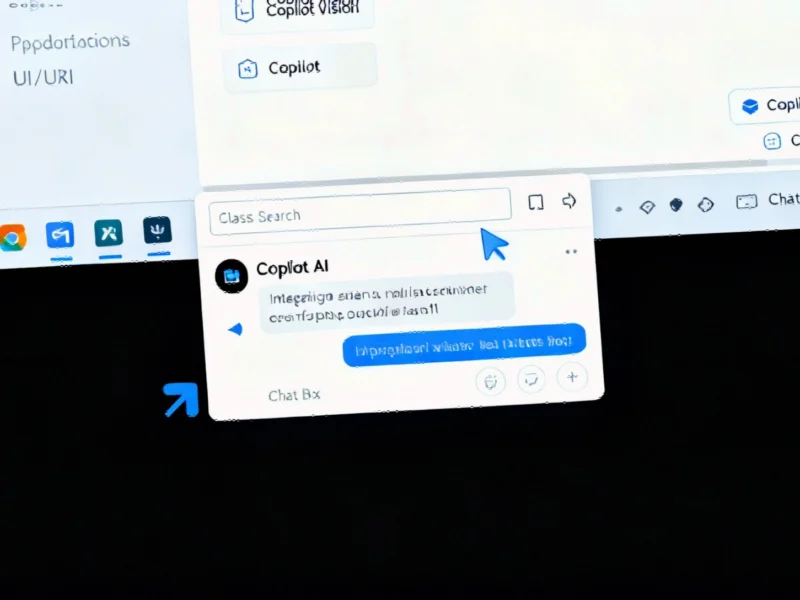According to Silicon Republic, Sara Fikrat, CPO of healthcare company Semble, discusses how vibe coding—using artificial intelligence to generate and deploy code under human supervision—is emerging as a democratizing force in biomedical research. Fikrat explains that this approach allows non-technical professionals in finance, marketing, and healthcare to move ideas from concept to working prototypes more efficiently by focusing on desired outcomes rather than writing detailed code. She references a recent study showing vibe coding’s potential to create a “new world order” in biomedical software development, particularly benefiting researchers and clinicians lacking formal computer skills. However, Fikrat emphasizes that this isn’t about shortcuts but requires trusted environments where innovation coexists with safety protocols, noting “growing evidence that some vibe coded applications carry vulnerabilities” in healthcare’s sensitive data environment.
Table of Contents
The Accessibility vs. Accountability Dilemma
What makes artificial intelligence-driven coding tools particularly compelling in healthcare is the sector’s unique combination of technical complexity and domain-specific knowledge. Biomedical researchers often possess deep scientific expertise but may lack the years of training required for robust software development. The promise of tools that can translate their domain knowledge directly into functional prototypes represents a significant shift in how healthcare innovation might accelerate. However, this accessibility comes with substantial accountability concerns—when non-programmers generate code for medical applications, who bears responsibility for edge cases, security flaws, or algorithmic biases that could affect patient outcomes?
Healthcare’s Unique Security Imperatives
The healthcare sector faces distinct security challenges that make casual experimentation with AI-generated code particularly risky. Unlike e-commerce or entertainment applications, medical software often handles protected health information subject to strict regulatory frameworks like HIPAA. When AI tools generate code, they may inadvertently introduce vulnerabilities through third-party libraries, insufficient data encryption, or improper access controls. The consequences extend beyond data breaches—flawed medical algorithms could lead to misdiagnosis, incorrect treatment recommendations, or faulty research conclusions. This creates a paradox where the very accessibility that makes vibe coding appealing also increases the attack surface for malicious actors targeting healthcare systems.
The Validation Crisis in AI-Generated Solutions
Fikrat’s experience with fabricated information highlights a fundamental challenge in biomedicine applications: AI systems can produce convincingly wrong outputs that require expert human validation. In biomedical research, where conclusions may inform clinical practice or drug development, erroneous code could propagate through entire research pipelines before detection. The problem extends beyond simple fact-checking to include statistical methods, data processing algorithms, and experimental design—areas where subtle errors can invalidate entire studies. This suggests that vibe coding in healthcare may actually increase, rather than decrease, the need for rigorous testing protocols and multidisciplinary review processes involving both technical and domain experts.
The Real Challenge: Clinical Workflow Integration
Successful implementation requires understanding that healthcare professionals operate in high-stakes, time-constrained environments where new tools must demonstrate immediate utility without disrupting established workflows. The gap between experimental STEM prototypes and clinically viable solutions remains substantial, requiring extensive usability testing, regulatory compliance documentation, and integration with existing electronic health record systems. Vibe coding might accelerate initial concept development, but the path to clinical adoption involves navigating complex approval processes, training requirements, and interoperability standards that AI tools cannot currently address without significant human guidance and domain expertise.
Broader Implications for Biomedical Innovation
Looking forward, vibe coding’s impact on healthcare innovation will depend on developing robust governance frameworks that balance accessibility with accountability. We’re likely to see emergence of specialized AI coding tools trained specifically on validated medical datasets and compliant code patterns, alongside certification programs for AI-assisted development in healthcare applications. The most successful implementations will probably involve hybrid approaches where AI handles routine coding tasks while human experts focus on critical validation, security auditing, and clinical relevance assessment. This evolution could ultimately create new roles—”clinical AI validators” or “healthcare prompt engineers”—bridging the gap between technical implementation and medical practice.
Related Articles You May Find Interesting
- Animal Crossing Switch 2 Edition: Nintendo’s Smart Upgrade Strategy
- Chinese Hackers Weaponize Windows Flaw in EU Diplomatic Espionage
- YouTube TV-Disney Blackout Reveals Streaming’s Fragile Economics
- Oracle’s $300B OpenAI Deal Sparks Valuation Reality Check
- America’s $1.2T Credit Card Crisis Meets AI Solutions



